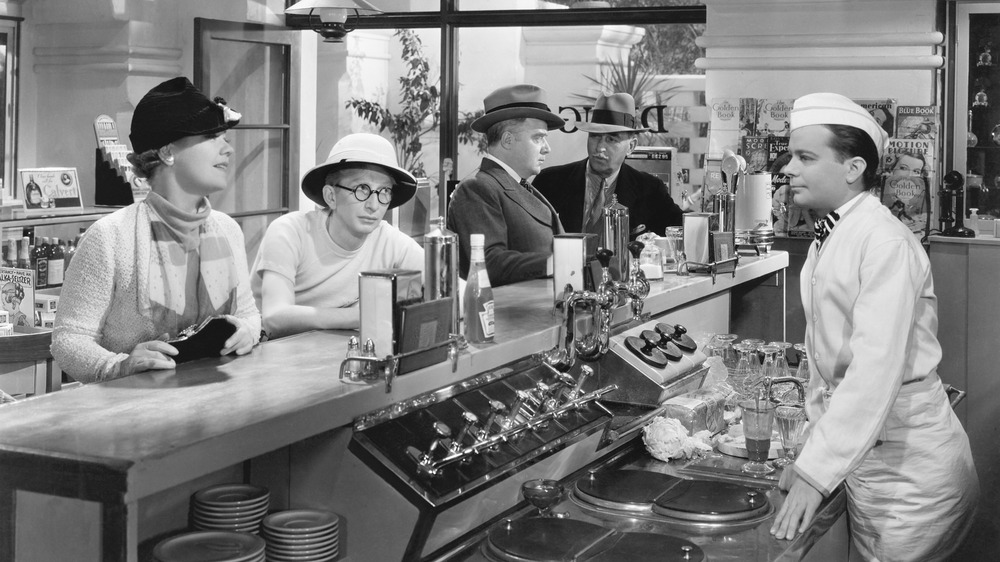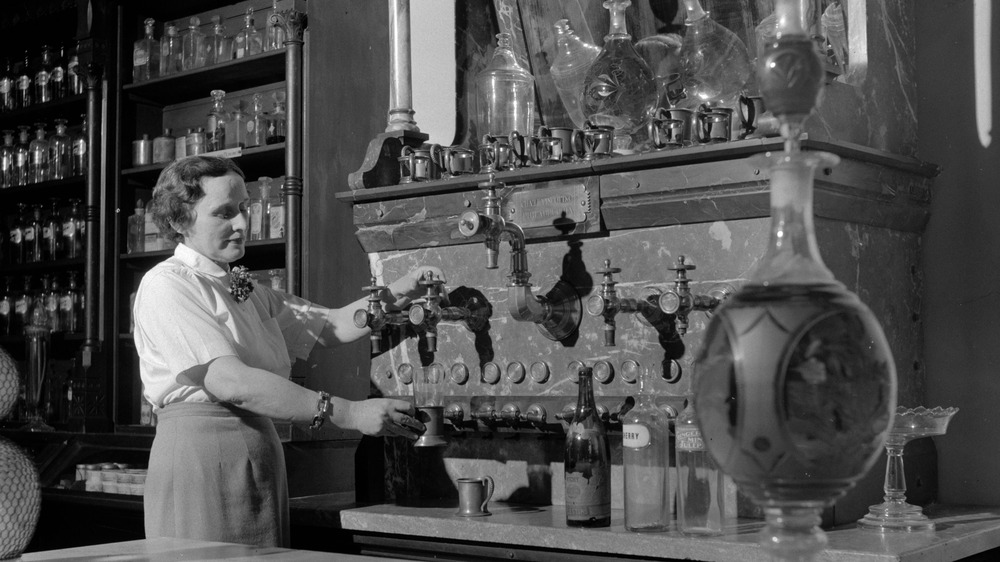The Truth About Hot Soda
Most people probably wouldn't conflate sodas with soup, but in the early days of drinking sodas out of crystal glasses at countertops with swiveling stools, soup and soda were sometimes one in the same. According to Atlas Obscura, hot sodas became a favorite order around the time soda fountains became popular in the early 1900s. While soda fountains ushered in crowds in the summertime, most people were less inclined to purchase cold drinks in the middle of winter. Store owners began marketing all kinds of warm drinks as "hot sodas" to attract consumers of all ages during the chilly winter months.
And as people began crowding around soda fountains at lunchtime year-round, more and more fountain owners realized they could make a few extra dollars by serving their customers snacks alongside their drinks. What began as just a warm drink evolved into full-fledged meals, and, thanks to hot and cold sodas both, casual lunch diners rose in prominence. As Atlas Obscura explains, these days most of these soda fountains have been replaced by fast food restaurants, and hot soda is a distant (or nonexistent) memory.
What exactly are hot sodas?
If up until this point you thought hot sodas were nothing more than microwaved Coke products, first of all, ew, secondly — think again! Hot sodas were originally marketed during the boom of the soda fountain when, during the colder winter months, soda revenue dropped. After all, who wants to drink a cold, refreshing drink when it's plenty cold and a little too refreshing outside?
Atlas Obscura claims that back in the soda fountain glory days, hot sodas could be any kind of warm drink, from coffee to broth served in a cup to something called a "Reeking Smatch," which consisted of clam juice, cream, and ginger (on second thought, those microwaved Cokes don't sound so bad). Some of these beverages, when served with crackers, were filling enough to constitute a full meal. A menu from 1913 lists categories such as "Hot Beef Drinks," "Hot Malted Milk," and "Hot Tomato Bouillon."
If you're still dying to try a heated-up version of your favorite soda, Serious Eats recommends Dr. Pepper. It might not taste good, per say, but in the '60s it became popular in the South, so at least we know it's edible.

